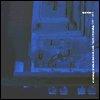"An Anthology of Noise & Electronic Music / Fourth A-Chronology: 1937-2005"
 SubRosa continues to delve into the hidden history of electronic musicwith the fourth instalment in this series. This is the most accessiblevolume so far with less emphasis on pure noise, the compilers stickingmainly to less abrasive pieces and brooding electronic pieces from thelast seven decades.
SubRosa continues to delve into the hidden history of electronic musicwith the fourth instalment in this series. This is the most accessiblevolume so far with less emphasis on pure noise, the compilers stickingmainly to less abrasive pieces and brooding electronic pieces from thelast seven decades.
Sub Rosa
The first thing (and probably the most superficial thing) that I noticed about this volume is the lack of the big names that the series has seemed to sell itself on (previous volumes included Cage, Merzbow, Neubauten, Beefheart, Autechre and so on). Volume 4 focuses more on obscure and/or serious artists. Browsing through the tracklisting for the first time, there were few names I recognised (on further investigation, this volume is dedicated to the unknown and unrecognised pioneers). Anyway, time to move on to the music itself.
Most of the tracks across the two discs are rhythmic drones, many ofthem very relaxing, with only a small few "difficult" pieces. Some ofthe music could be seen as boring and predictable as the ideas exploredin it have been reused and improved in the years since these particulartracks were recorded. The majority still sound extremely fresh andsometimes frighteningly contemporary. The opening track by Halimel-Dabh, an Egyptian composer dabbling in musique concrête beforemusique concrête existed, has a haunting quality which astoundsme by being over sixty years old. This small piece of electronic magicis followed by the much duller “Pièce Électronique #3” by György Ligeti(of 2001: A Space Odyssey fame). No doubt it sounded otherworldly at the time but it is lacklustre both in the context of this compilation and in the context of his other works. At the end of the compilation is a beautiful piece by Olivier Messaiaen for the Ondes Martenot, similar in sound to a theremin, which pairs off perfectly with el-Dabh's piece. Both are early examples of using electronics to make sounds that sound far more contemporary than they are (Messaiaen's "Oraison" is from 1937).
Reich’s “Pendulum Music” is included here. I like it but Ulrich Krieger’s interpretation didn’t do much for me. However, like a lot of the music here, the random nature of pieces like “Pendulum Music” means that it’s very hard to enjoy every version of a particular piece. The very nature of noise is its randomness. It shouldn’t be either likeable or dislikeable; it should just be what it is. If it’s aesthetically appealing then that’s just a happy accident (I think there’s a distinction between a piece being aesthetically and conceptually appealing).
One band I’m delighted to hear on this compilation is Japan’s criminally obscure Les Rallizes Denudes. Personally I think they fall firmly in the realm of rock as opposed to noise (and definitely not electronic music). Granted they were a noisy band, “Fucked Up and Naked” demonstrates this, but the noise seemed more like a by product than an actual goal. In a similar way “River Blindness” by Andy Hawkins is an example of how noisy rock can be. Feedback and volume have always been standard issue in rock’s arsenal and Hawkins seems to be stockpiling both. These two tracks show how noise isn’t just a pastime for the avant garde composer. Of course they also demonstrate how you can over intellectualise rock and I feel that the compilers have slightly shot themselves in the foot.
The concept of the cut up in music is well worn at this stage. In this day of sampling and easy editing, it’s hard to think of it as an art form as opposed to a tool. Listening to some of the tracks on this album brings home how revolutionary cut ups once were. “Broken Music Composition” by Knizak shows how physical the act of cutting up was; Knizak would break up records and reassemble them in new combinations to make random compositions. It sounds like someone trying to tune in stations on an extremely unreliable radio. The Burroughs tape piece is not strictly a cut up but works on a similar principle. “Present Time Exercises” is a collage of radio and television recordings mashed together. It sounds hackneyed now as dozens of “edgy” artists have done the idea to death but it is still a fascinating window into Burroughs’ unique mind.
There is a lot of material contained here and most of it isfascinating or at the very least of some historical importance. Thereis little to no filler: the people at Sub Rosa have done a sterling jobof picking out nuggets. It is especially impressive consideringthe Anthology project now spans eight CDs. I am impressed to say the least by their continuing high standards.
samples:
- Halim el-Dabh, "Wire Recorder Piece"
- Les Rallizes Denudes, "Fucked Up and Naked"
- Olivier Messaiaen, "Oraison"



